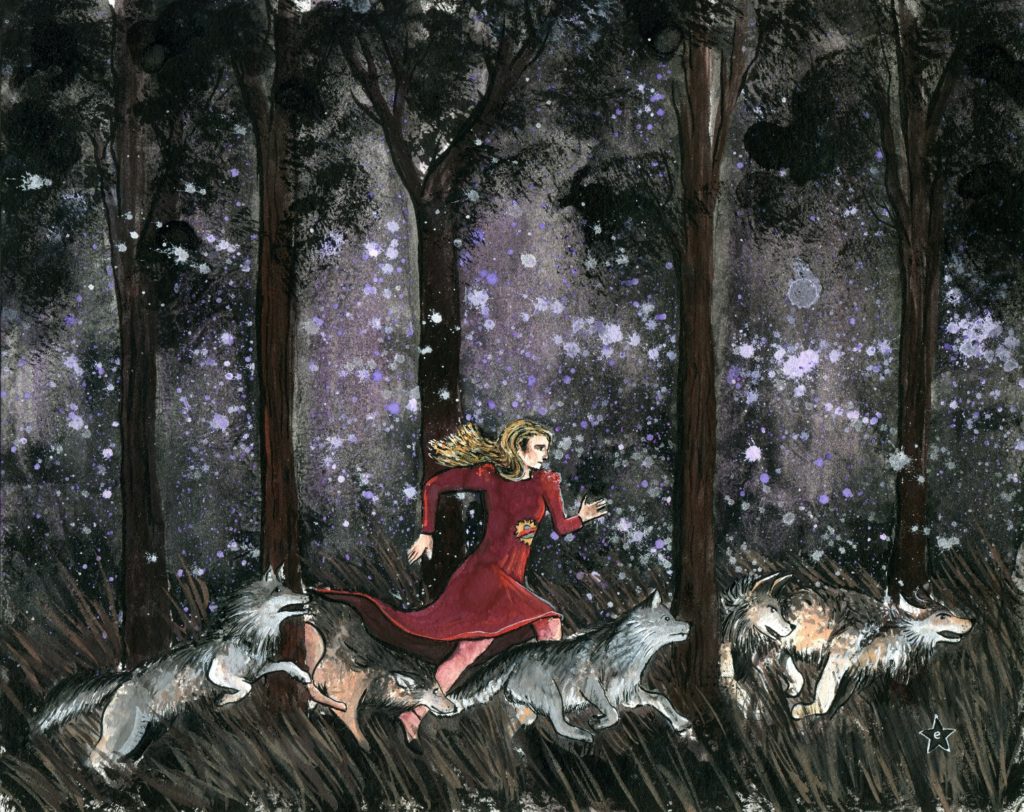
Animals have a unique way of capturing different aspects of the human spirit. They have been present in our myths and fairytales from the dawn of civilization. Some cultures uphold certain animals and villainize others, but what’s fascinating is the archetypes for each animal retain the same symbolism across history and culture.
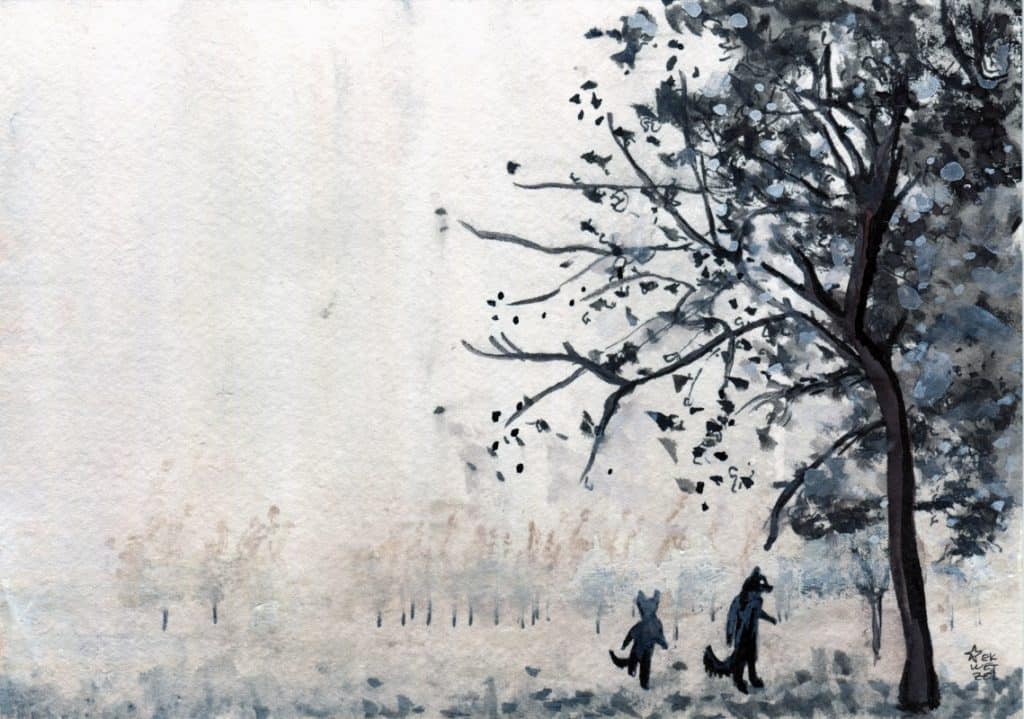
Consider the wolf.
In Aesop’s Fables and Grimms’ Fairy Tales, the wolf is a dark stranger whose hunger is so desperate he will devour his victims whole.
In Roman mythology, the wolf is a source of unexpected help for Romulus and Remus when they were left to die from exposure. In Serbian folklore, a woman who had lost several babies in succession would name her newborn son Vuk (translated: wolf), because it was believed that the witches, who “ate” the babies, were afraid to attack the wolves. According to the Egyptians, it was Wepwawet–the deity with the head of a wolf–who was a guide to the undead, leading the deceased over the abyss, through the River Styx, to their transformation in the darkness beyond.

Whether the wolf is sympathetic or feared, the underlying characteristics of what it means to be a wolf remain the same. The wolf symbolizes our survival, our mystery, our passion. These aspects of our spirits guide us through darkness to the other side. The wolf is the only one fierce enough to help us when everything else fails.
Working with animals as a storytelling device shifts the way I perceive morality in fiction. The drama of the “Big Bad Wolf” villain trope is an attractive narrative device to someone who is obsessed with playing the role of the hero or the victim… but reducing the mysteries of our human experience into these petty drama cycles detracts from looking inwardly to tap into our innate power. I’ve come to see that there is not one villainous species, but each species is capable of virtue or vice, each different animal has its own strengths and weaknesses. The rabbit may be sweet but reckless. The fox may be crafty but manipulative. The owl may be wise but withdrawn.
When I turned my paintings inward, painting themes from my own life, endeavoring to tell my story, the artwork deepened again for me. I started to paint through the trauma of divorce, the pain of heartbreak, abandonment from losing family, loneliness from being queer. Through it all, the practice of painting was a ritual of hopefulness.
In the beginning, before there was anything at all, God’s first acts were to create, to give names, and to assign value. That’s what I learned in my Christian upbringing. Now here I was, in my own void, hovering over dark waters, bringing life out of nothingness. I was painting and writing, giving shape and form to ideas, naming my thoughts and forging a path through thickets of feeling like a roadmap for others lost in pain and loneliness. As I handled my creations, the things that rose up out of my tortured soul, I saw that they were a breath of goodness.
As women creators, we tap into this wild and instinctual energy that courses through the universe. We dream of archetypes…and not in the way that Hollywood or Politics or Polite Society would have us dream. No. We dream of messy things. We dream of magic and motherhood, sex and serenity, hunger and hospitality.
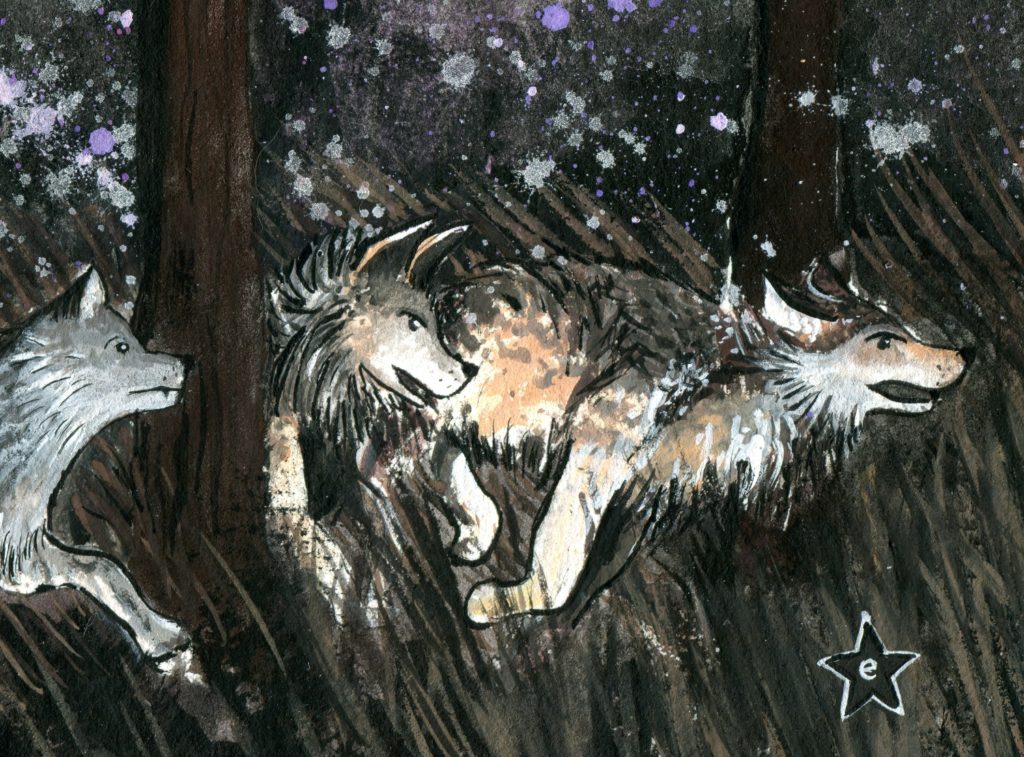
We need more wilderness in our storytelling. We need wolves. That is what the book Women Who Run With The Wolves by Clarissa Pinkola Estés is all about. (If you haven’t read it, I recommend the audiobook because Estés sings the poems found there!) Estés unpacks the archetype of the wild woman, talking specifically to women who do not ever feel like they belong. She talks to weird women, women who suffer, women who are full of a vibrant and unwieldy energy but who have been domesticated away from their inner light. Her book is an encouragement to listen to our instinctual nature, forging out a place for our voices to be heard in this world.
We need intersectional storytelling and women’s voices if our society has any chance at all of enduring the cultural horrors that face us. We need nurturing for our souls. We need creators like Brit Marling and Zal Batmanglij–a woman and a queer person of color… creators of the TV show, The OA–to serve as cultural guideposts to us in these difficult times. The OA is an entirely original, unique narrative forging a new mythology. Do you know how thrilling that is to me, as someone who is trying so hard to forge her own new stories? Brit and Zal are making the kind of work that I aspire to.
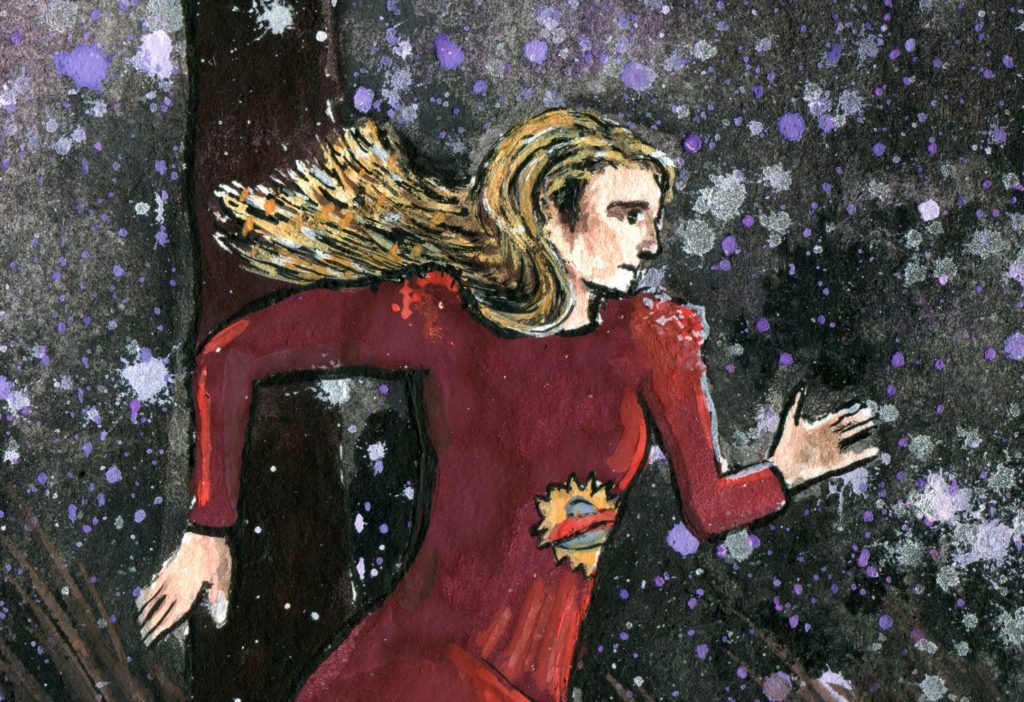
The OA is more than a TV show. It is art. It is a place where creativity, community and found family are explored. It’s a place to heal from trauma. It’s a place to rediscover faith. And Netflix canceled it, silencing the story before it was completed.
If you have not watched this show, please do so now. It is weird and mysterious and requires you to open your mind as it is radical in its sincerity. In light of the cancelation, fans all over the world are tweeting, canceling our Netflix accounts, sharing videos as we learn the dance in the story known as The Five Movements. We are giving our time, our talents, our faith. This isn’t about saving a piece of entertainment. This is about defending our tribe. This is about holding media gatekeepers accountable and demanding they make more room on their platform for intersectional voices.
On one level, my newest painting was created to raise awareness for the #savetheoa movement to keep the mysterious narrative of The OA alive.
On a deeper level, however, this painting is something that has been running through me for awhile, biting at my heels, howling in my belly, aching to be born. There’s a misconception about wild things in our culture. We are not “wild and free,” untamed, unstructured, flying away on the wind. No. Everyone belongs to something, but we are wild things because we choose to belong to each other, and when you belong to something that’s alive, you’re constantly moving and shape-shifting and growing in unpredictable and breathtaking ways.
I belong to The OA tribe.
This art piece embodies my own soul and uses what archetypes I have available to me like skins on living thoughts, propelling me ever forward down this tumultuous path, following me as I howl in the night, filling me with awe at the generosity of the universe, teaching me time and again to say: yes.
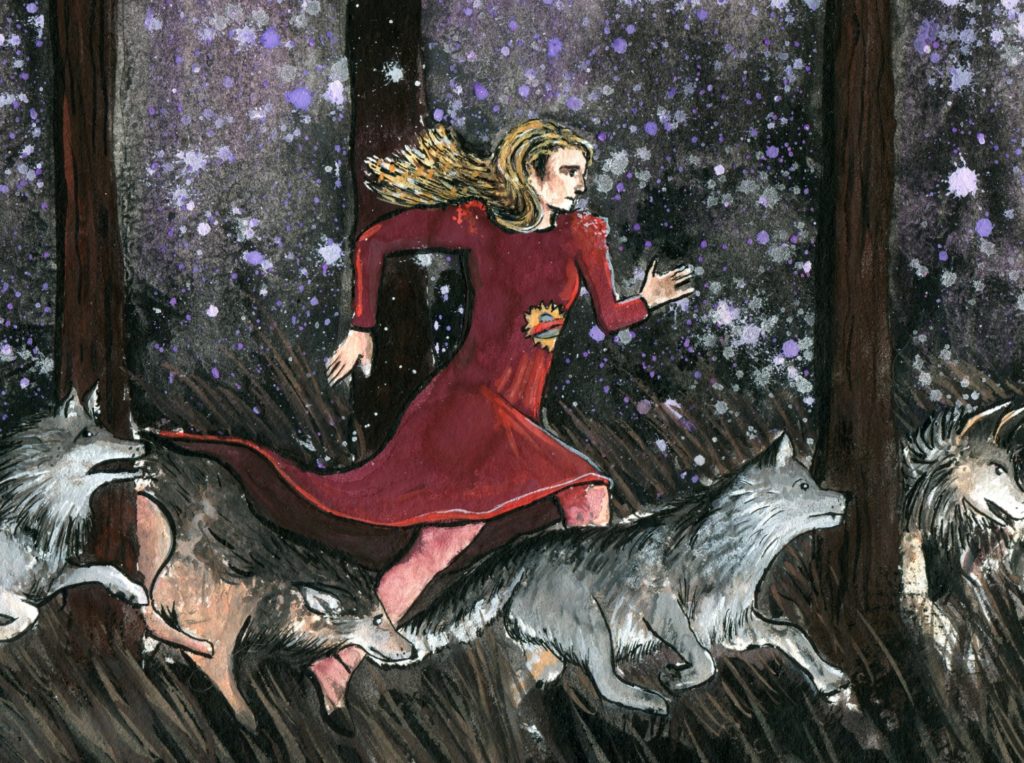
If you like the words that I write or the art that I paint and you want me to create more, please buy something from my shop or support me on Patreon. Thank you.

This blew me away. The words and the pictures you’ve created…. Thank you for writing this. Xxx
I had seen this painting and immediately it resonated with me. (Especially because I had just begun to read Women who run with wolves). Now- after reading your reflection and intention about this piece, it is even more powerful and inspiring!